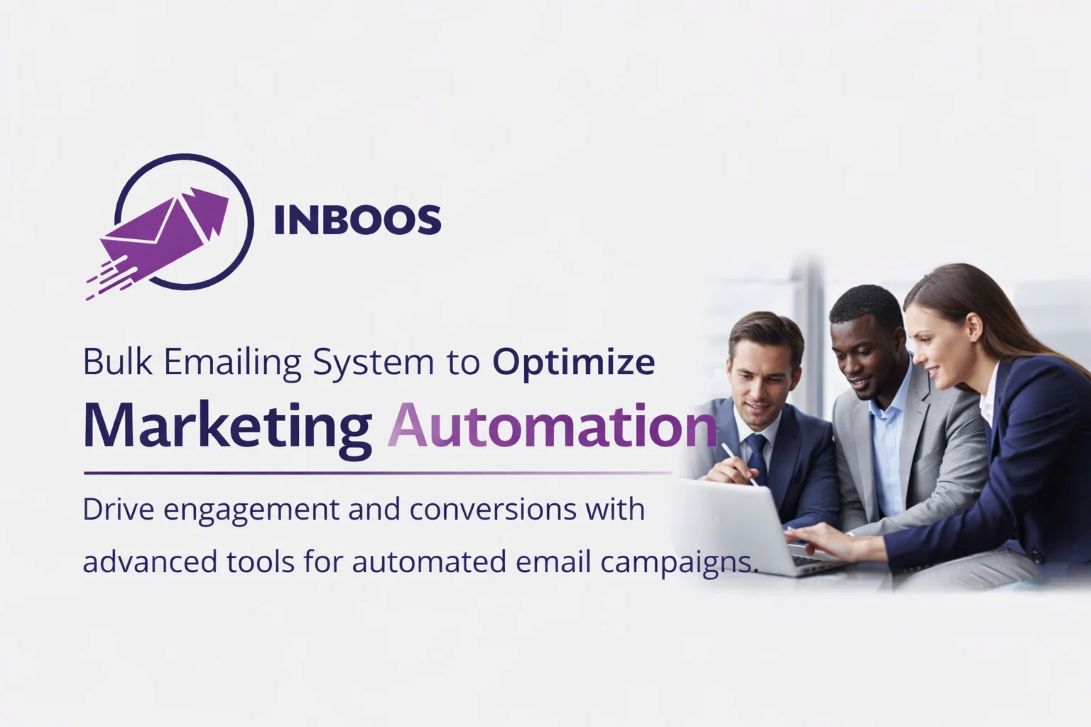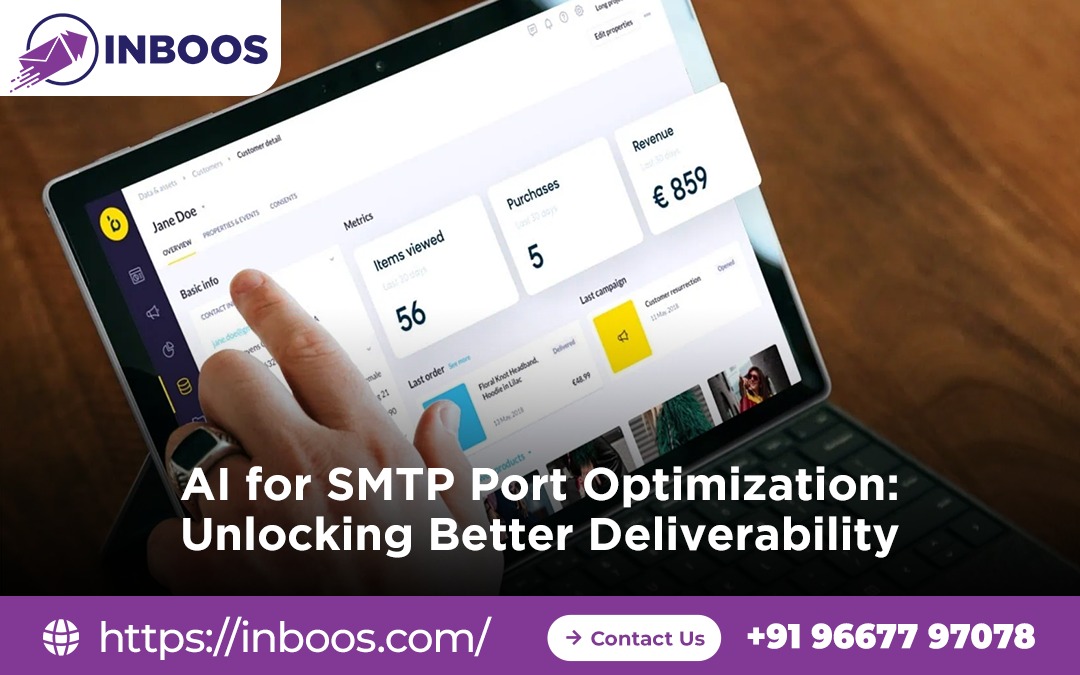Email deliverability is one of the most critical factors in the success of any email marketing campaign. While most marketers focus on subject lines, content, and segmentation, many overlook the technical foundation—SMTP port configuration. Choosing the right SMTP port and optimizing it with AI can significantly improve inbox placement, reduce bounce rates, and avoid spam filters.
Table of Contents
ToggleThis guide explains how AI can help optimize SMTP ports and improve email deliverability. It includes step-by-step solutions and practical tables to help marketers, developers, and SaaS teams configure their email infrastructure correctly.
What Is SMTP and Why Do Ports Matter?
SMTP stands for Simple Mail Transfer Protocol. It’s the protocol used to send emails from one server to another. SMTP uses different ports to transmit data, and each port has its own characteristics, risks, and compatibility issues.
Choosing the wrong port can lead to blocked emails, failed encryption, or poor deliverability. Optimizing the right port ensures secure transmission, better ISP trust, and higher inbox rates.
Overview of Common SMTP Ports
| Port | Encryption Type | Recommended Use Case | Risks and Limitations |
|---|---|---|---|
| 25 | None | Legacy relay, server-to-server | Often blocked by ISPs, high spam risk |
| 465 | SSL | Deprecated, still used by some | Inconsistent support across providers |
| 587 | STARTTLS | Standard for email submission | Best for secure, authenticated sending |
| 2525 | STARTTLS | Alternative to 587 | May not be supported by all ISPs |
Port 587 is currently the most recommended for secure and authenticated email submission.
Common SMTP Port Issues That Affect Deliverability
- Using Port 25 for Submission Port 25 is often blocked by ISPs and flagged by spam filters. It should only be used for server-to-server relays.
- Lack of Encryption Sending emails without TLS or SSL can result in failed handshakes and poor spam scores.
- Firewall Restrictions Some ports may be blocked by firewalls or hosting providers, causing delivery failures.
- ISP Rate Limits ISPs may throttle traffic on certain ports, leading to slow delivery or bounced emails.
How AI Helps Optimize SMTP Ports
AI can analyze email delivery patterns, ISP behavior, and port performance in real time. It can automatically adjust configurations to improve deliverability.
Key AI Capabilities
| AI Feature | Benefit to Email Deliverability |
|---|---|
| Port Health Monitoring | Detects blocked or throttled ports |
| ISP Behavior Prediction | Routes emails through preferred channels |
| Encryption Enforcement | Ensures TLS/SSL is properly configured |
| Bounce Pattern Analysis | Identifies port-related delivery failures |
| Auto-Configuration | Adjusts SMTP settings based on performance |
Step-by-Step Guide to SMTP Port Optimization Using AI
Step 1: Audit Current SMTP Configuration
- Identify which port your system is using (25, 465, 587, or 2525).
- Check if encryption is enabled (STARTTLS or SSL).
- Review bounce logs and spam complaints.
Step 2: Switch to Port 587
- Update your SMTP settings to use port 587.
- Enable STARTTLS encryption.
- Authenticate with a valid username and password.
Step 3: Implement AI Monitoring
- Use an AI-based email infrastructure tool to monitor port performance.
- Set alerts for delivery failures, throttling, or encryption issues.
Step 4: Analyze ISP Behavior
- AI can track how different ISPs respond to your emails.
- Adjust sending patterns based on ISP preferences.
Step 5: Optimize Retry Logic
- Configure your system to retry failed deliveries using alternative ports (e.g., 2525).
- AI can automate this process based on bounce codes.
Step 6: Maintain a Clean IP Reputation
- AI tools can monitor your sender score and spam complaints.
- Avoid sending through ports that are flagged by ISPs.
Comparison of Manual vs AI-Based SMTP Optimization
| Feature | Manual Configuration | AI-Based Optimization |
|---|---|---|
| Port Selection | Static | Dynamic and adaptive |
| Encryption Setup | Manual | Auto-enforced |
| ISP Behavior Tracking | Limited | Real-time analysis |
| Bounce Management | Reactive | Predictive |
| Retry Logic | Basic | Intelligent routing |
| Deliverability Insights | Minimal | Deep diagnostics |
Best Practices for SMTP Port Configuration
- Always use port 587 with STARTTLS for email submission.
- Avoid port 25 unless you’re doing server-to-server relays.
- Use AI tools to monitor and adapt your SMTP settings.
- Authenticate all email traffic to prevent spoofing.
- Regularly review bounce logs and spam reports.
- Maintain a clean sending reputation with ISPs.
Tools That Support AI-Based SMTP Optimization
| Tool Name | Key Features | Ideal For |
|---|---|---|
| Postmark | Smart routing, bounce tracking | Transactional email platforms |
| SendGrid | AI deliverability insights | SaaS and marketing teams |
| Mailgun | Port monitoring, ISP behavior analysis | Developers and tech marketers |
| SMTP2GO | Auto port fallback, encryption checks | Global email delivery |
SMTP port optimization is a technical but essential part of email deliverability. With AI, you can automate the process, reduce errors, and ensure your emails reach the inbox. Whether you’re running a SaaS platform, sending transactional emails, or managing large-scale campaigns, AI-powered SMTP configuration gives you a competitive edge.
By switching to port 587, enabling encryption, and using AI tools to monitor and adapt your infrastructure, you can unlock better deliverability and drive more engagement from your email campaigns.
If you’d like, I can also generate microblog ads or landing page copy based on this blog. Just say the word.
📩 Have Questions or Need Expert Help?
Our team is here to make your email marketing, bulk emailing, and mass emailing effortless and effective.
🚀 Let’s boost your deliverability, scale your outreach, and unlock better results!
👉 📌 Contact Us Today
 logo
logo




